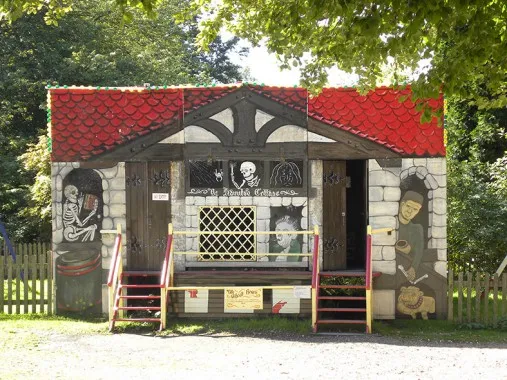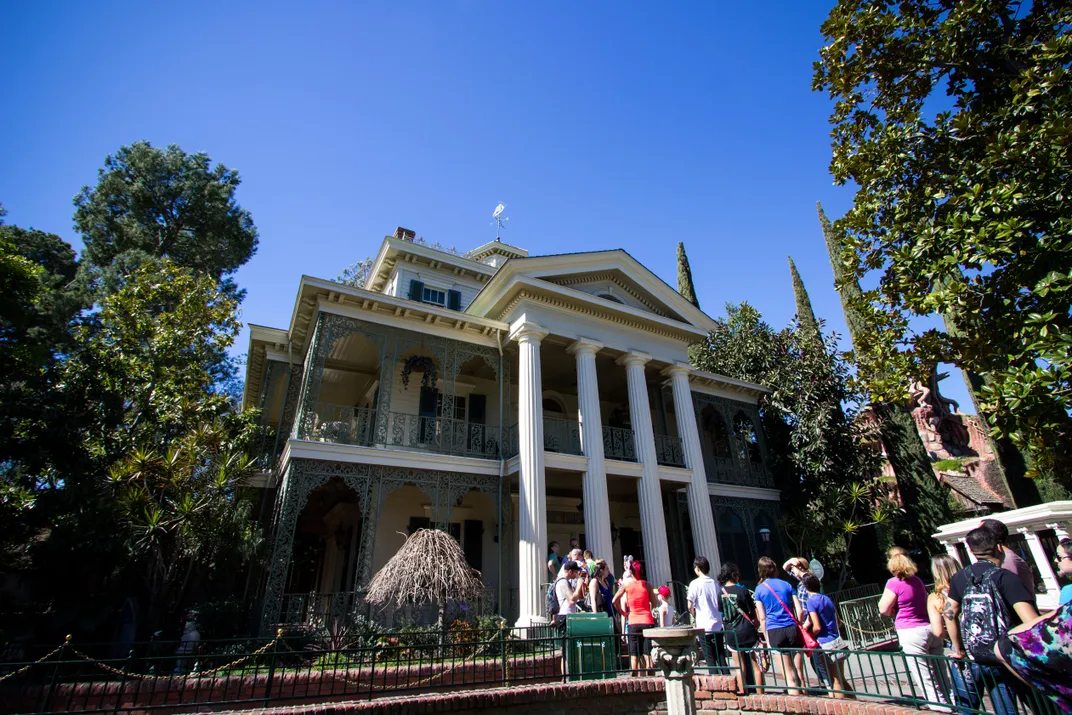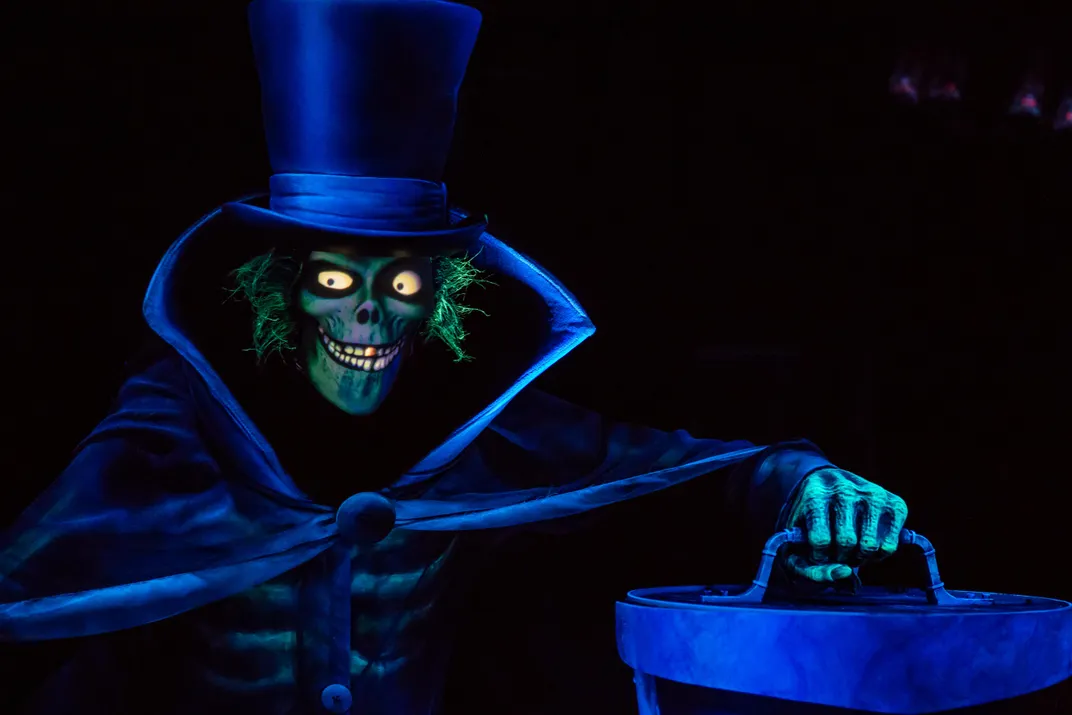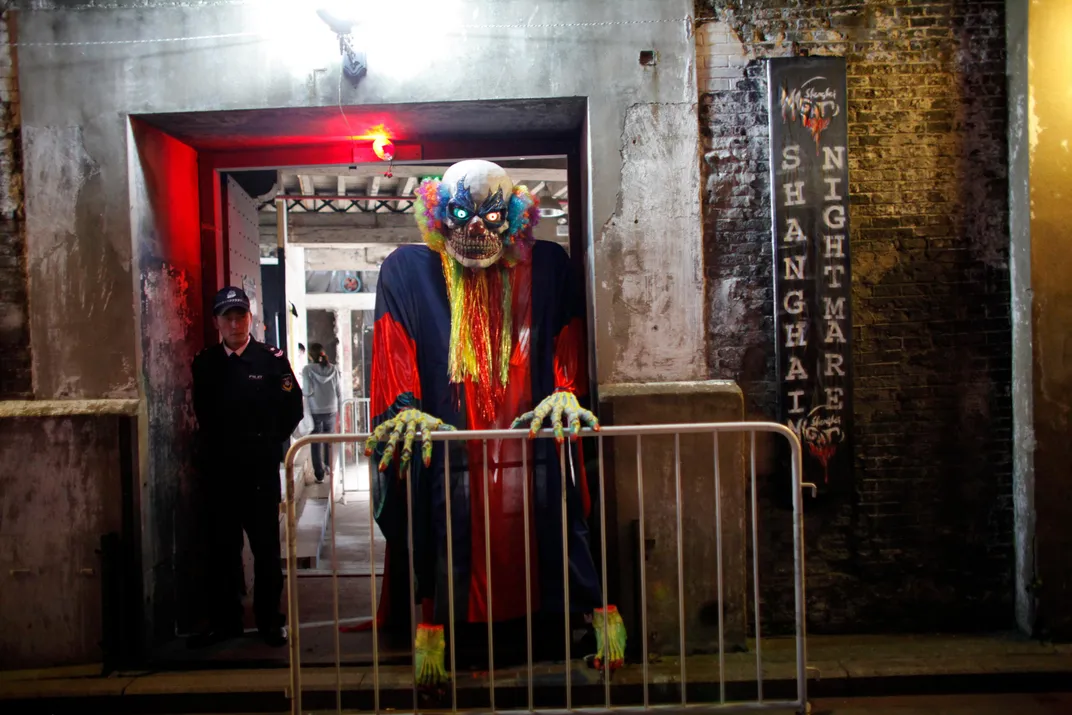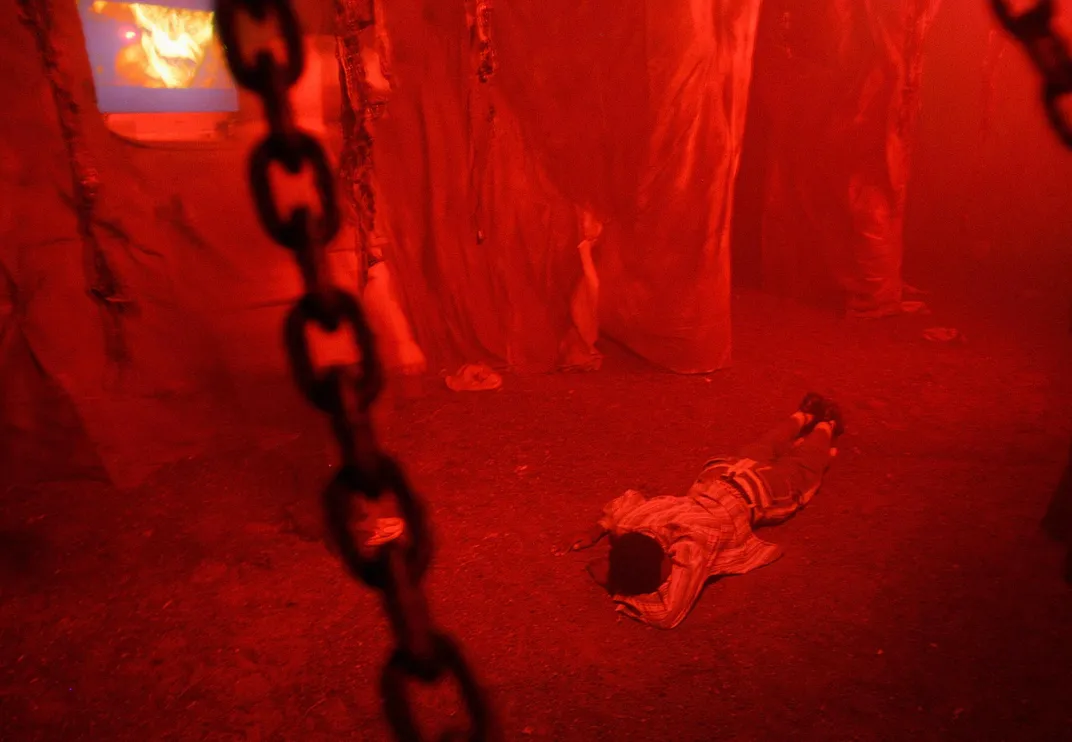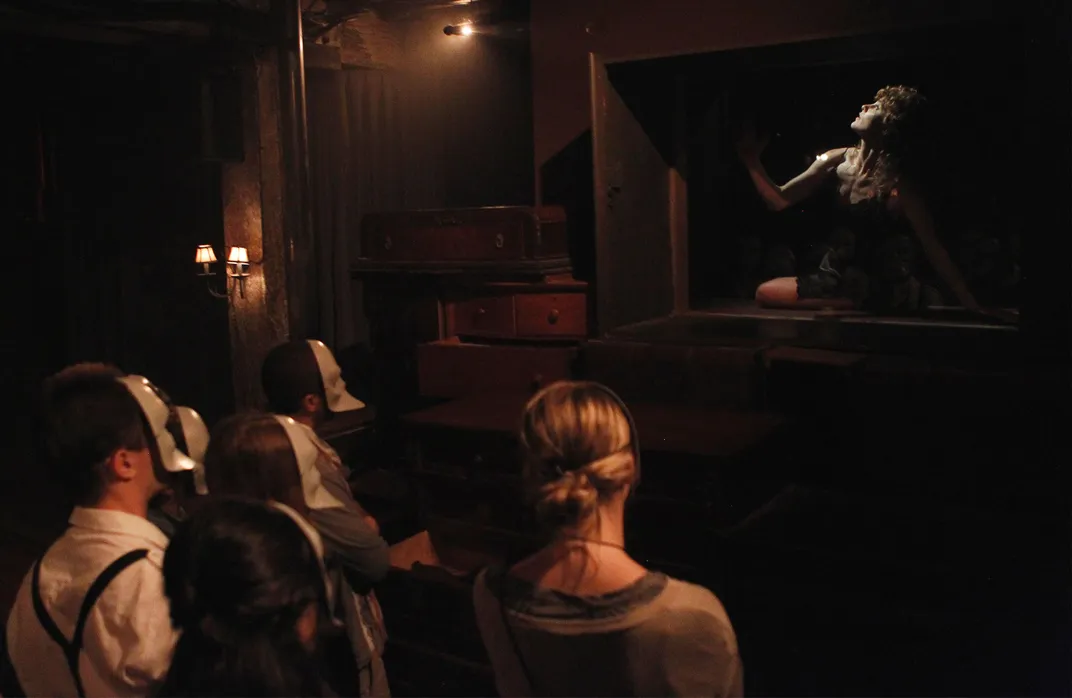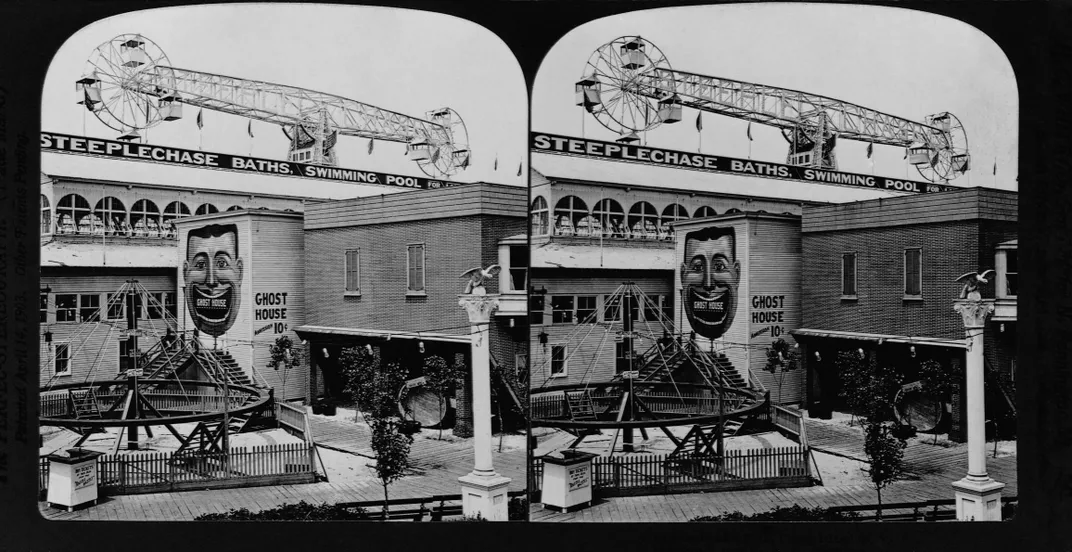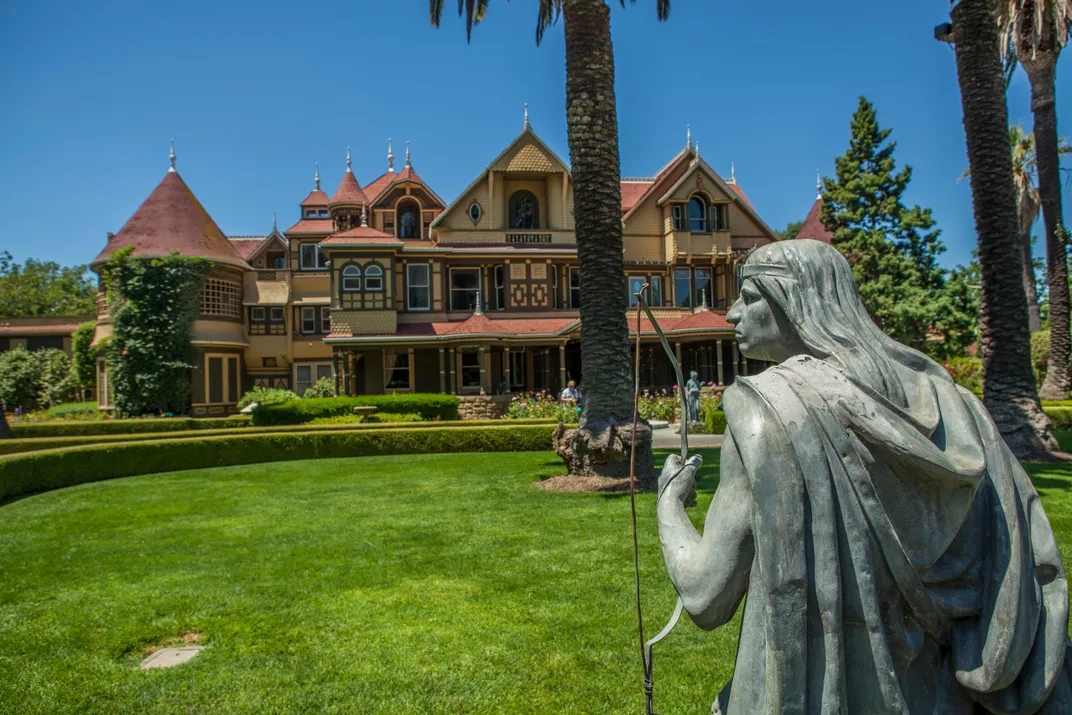A Brief History of the Haunted House
How Walt Disney inspired the world’s scariest Halloween tradition
/https://tf-cmsv2-smithsonianmag-media.s3.amazonaws.com/filer/f1/06/f106873a-1896-48b2-b45d-8bcd62fb95e1/hatbox_ghost.jpg)
The scariest haunted house of 2017 is a giant walk-through attraction located in the former Georgia Antique Center in the outskirts of Atlanta. Named Netherworld, it features 3D special effects, aerial performers and, of course, flesh-eating clowns. Netherworld frightens so effectively, so inescapably, that people with heart conditions are warned against buying tickets.
This is what a haunted house is supposed to do. They exist to scare people. The idea behind haunted houses is not new, of course— people have entertained themselves with spooky stories for centuries — but haunted houses are different because they are inseparable from the holiday that vaulted them to cultural prominence. The tradition could not exist without Halloween; Halloween would not be the same without it.
The origins of the haunted house date back to 19th-century London, when a series of illusions and attractions introduced the public to new forms of gruesome entertainment. In 1802, Marie Tussaud scandalized British audiences with an exhibition of wax sculptures of decapitated French figures, including King Louis XVI, Marie Antoinette, Marat and Robespierre. Tussaud's likenesses were remarkably accurate, and with good reason — she created death masks of the French Revolution's many guillotine victims. When she set up a permanent London exhibition, she dubbed her grotesque collection the "Chamber of Horrors" — a name that has stuck to the wax museum to this day.
At the turn of the 20th century, as Rebekah McKendry describes in Fangoria magazine, the closest relatives to modern haunted houses began experimenting with macabre themes. In Paris, the Grand Guignol theater became notorious for its on-stage depictions of graphic dismemberment; the theater's director, Max Maurey, famously boasted that he judged each performance by the number of people who passed out, shocked, in the audience. In 1915, an English fairground in Liphook debuted one of the first "ghost houses," an early type of commercial horror attraction. The public appetite for horror was picking up.
Lisa Morton, author of Trick or Treat: A History of Halloween, tells Smithsonian.com that Halloween-themed haunted houses first emerged during the Great Depression as American parents schemed up ways to distract young tricksters, whose holiday pranks had escalated to property damage, vandalism and harassment of strangers. "They came in about the same time as trick-or-treat did," she says. "Cities looked for ways to buy these kids off, essentially."
Those first haunted houses were very primitive. Groups of families would decorate their basements and hold "house-to-house” parties. Kids could spook themselves by traveling from basement to basement and experiencing different scary scenes. This 1937 party pamphlet describes how parents could also design "trails of terror" to spook their children. The effects may seem familiar to anyone who has ever been disappointed by a sub-par scare:
An outside entrance leads to a rendezvous with ghosts and witches in the cellar or attic. Hang old fur, strips of raw liver on walls, where one feels his way to dark steps....Weird moans and howls come from dark corners, damp sponges and hair nets hung from the ceiling touch his face....Doorways are blockaded so that guests must crawl through a long dark tunnel....At the end he hears a plaintive 'meow' and sees a black cardboard cat outlined in luminous paint..."
The haunted house didn't become a cultural icon, though, until Walt Disney decided to build one. Disneyland’s Haunted Mansion opened in 1969, nearly two decades after Disney first approved the beleaguered project. The attraction, which was designed in the style of the Evergreen House and the Winchester Mystery House, quickly became a success. In a single day shortly after its debut, more than 82,000 people passed through the Haunted Mansion. The attraction's centerpiece is the Grand Hall, a 90-foot-long ballroom sequence of dancing ghouls at a birthday party. Disney brought to scene to life through an exceptionally complex series of illusions known as Pepper's ghost, which use refracted light to project and shape ethereal images. "A lot of the professional haunters will point to one thing, and that's Disneyland's Haunted Mansion. It's the start of the haunted attraction industry," Morton says. The attraction was revolutionary, as she explains in Trick or Treat:
What made the Haunted Mansion so successful and so influential, however, was not its similarity to haunted houses and "dark rides" (that is, tawdry carnival haunted houses) of the past, but its use of startling new technologies and effects. Ghosts were no longer simply sheets hung in a tree, but were instead actual shimmering translucent figures that moved, spoke and sang. A witch wasn't just a rubber-masked figure bent over a fake cauldron, but a completely realistic bodiless head floating in a crystal ball, conducting a complex séance.
Within a few years, the haunted house had spread across the country. The United States Junior Chamber, also known as Jaycees, became famous for raising money through its haunted houses. (The fundraising venture was successful enough to spawn its own how-to guide.) In California, Knott's Berry Farm began hosting its own Halloween night attractions, which soon transformed into a multi-week slate of events. Every year, a man named Bob Burns attracted national media attention for his detailed recreations of classic horror movies. Evangelical Christians even made their own anti-Halloween attractions; Jerry Falwell and Liberty University introduced one of the first "hell houses" in 1972.
As Hollywood began to embrace slasher movies like Halloween, A Nightmare on Elm Street, and Friday the 13th, the haunted house industry reaped the benefits. The horror boom fueled a demand for scary attractions, not to mention cross-promotional advertisements. "If you went to a haunted house in the 1980s and 1990s, you would've seen a lot of Freddy Krueger, Jason, Pinhead. The haunted house industry really followed the movie industry at that time," Larry Kirchner, president of Haunted House Association, a trade group for haunted house operators, tells Smithsonian.com.
Professional haunted houses first emerged as a force in the same era, quickly outspending non-profit groups like the Jaycees. Then, tragedy struck: A fire at a haunted house in New Jersey trapped and killed eight teenagers. In the aftermath of their deaths, attractions were shut down, and politicians enacted stronger safety regulations. Volunteer organizations struggled to compete against new competition under tougher rules. Soon, many were forced out of business. It was a watershed moment for the industry, says Kirchner: "The Jaycees got pushed out because their haunted houses were fairly basic. It was based on the premise that people would volunteer, but when you have people opening big haunted houses with lots of advertising, that's hard," he says.
During the next two decades, the number of professional haunted houses erupted. Kirchner estimates that roughly 2,700 of them operated nationwide last year. A large haunted house attraction can reportedly earn $3 million during the Halloween season, and the industry is worth $300 million, according to an NBC report.
These days, haunted houses are no longer just about creepy characters and hyper-realistic horror. Instead, the industry has flocked to all sorts of new, extreme frights: zombie runs, escape games, and experiences seemingly designed to traumatize. How long will these successes last? Can the haunted house last another half-century? And if it does, what will it look like?
Kirchner doubts that the haunted house is here to stay. "If I was going to guess, I'd say no," he says. "Every business will eventually fail, so we just want to last as long as we possibly can."
A Halloween without haunted houses? Now that's a scary thought.


